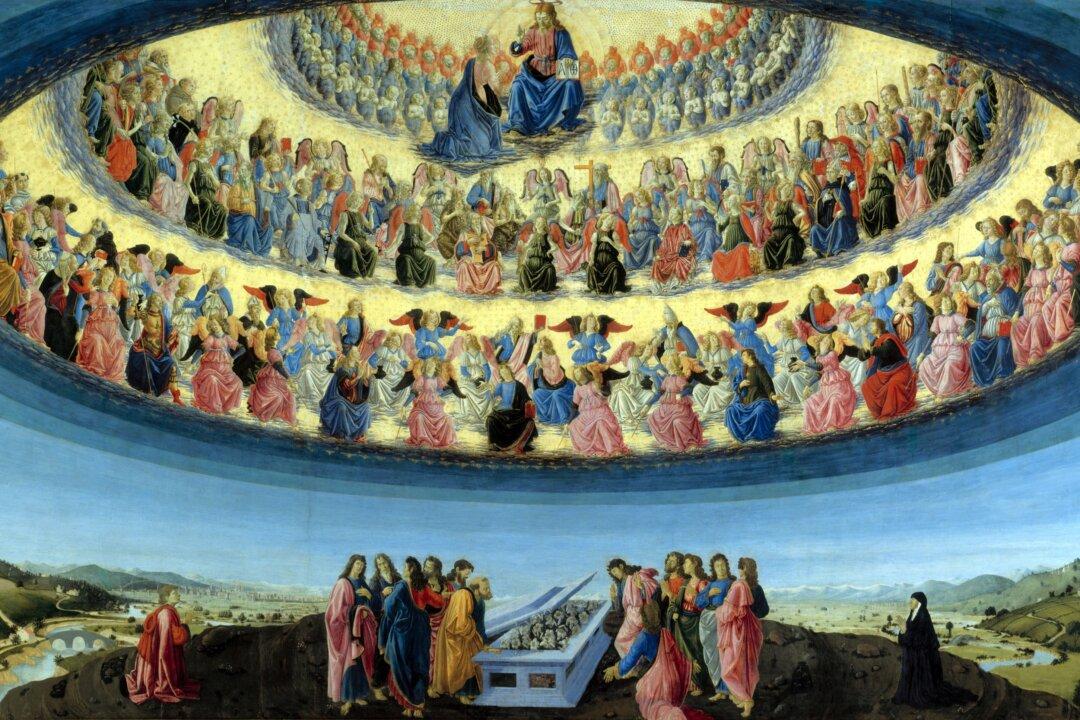Around 1475, Italian Renaissance artist Francesco Botticini created a large painting titled “The Assumption of the Virgin.” The theme of the Virgin Mary ascending to heaven was common in Renaissance art.
In the lower third of the painting, we see the 12 apostles of Jesus. They stand next to an open casket on a hill that overlooks Florence, Italy. The casket contains not a body, but instead lilies—the flowers often associated with Mary’s purity.





